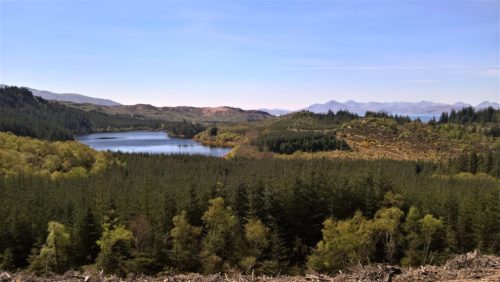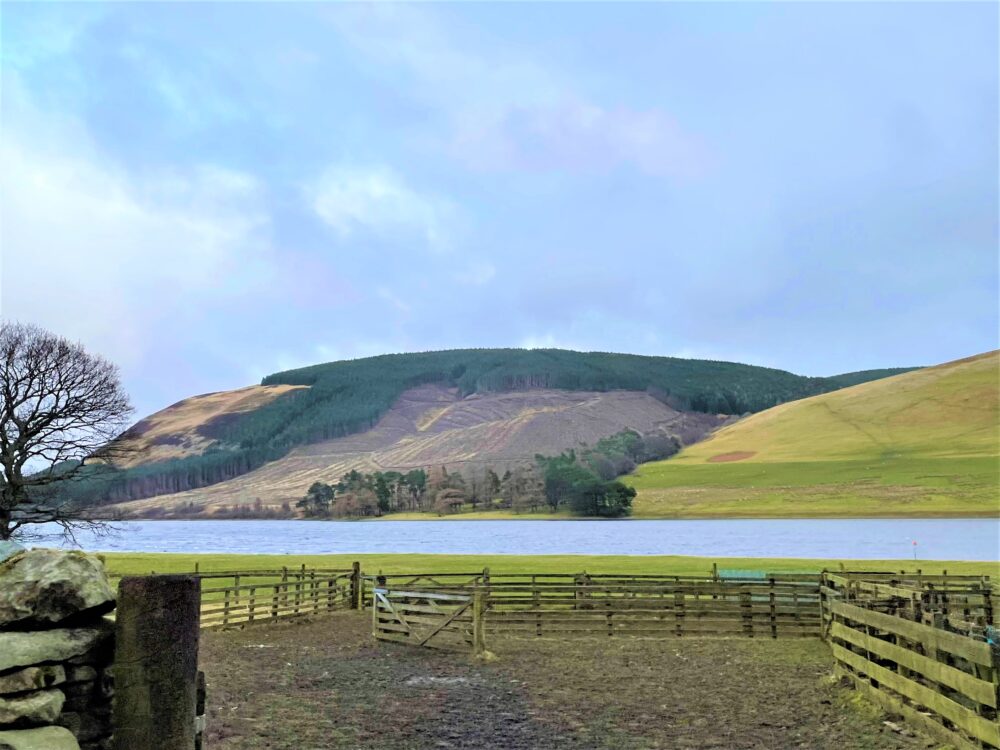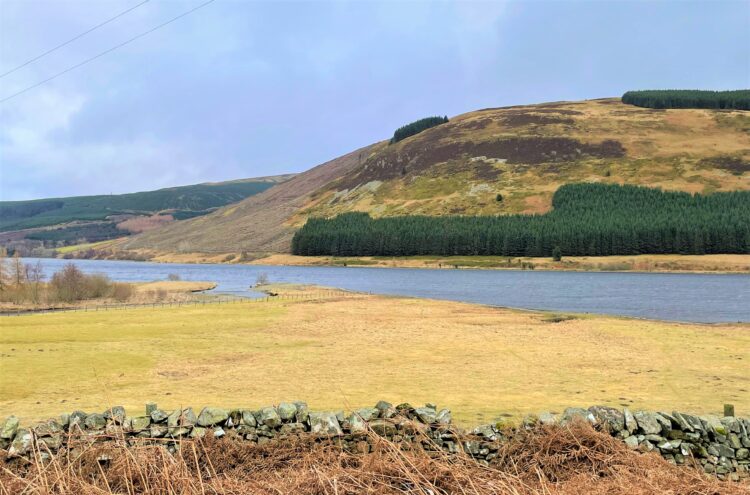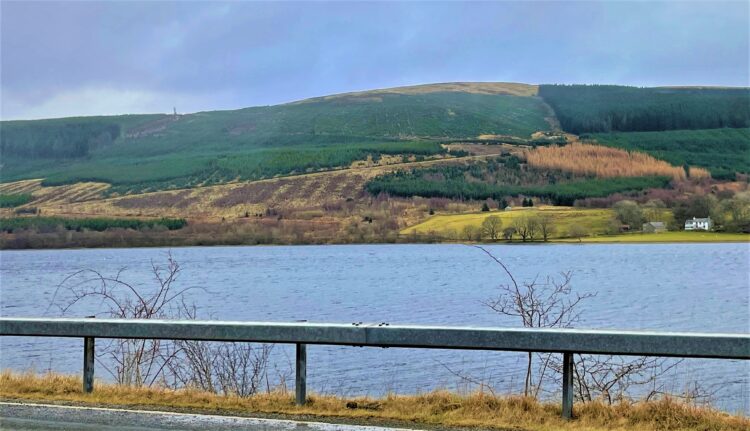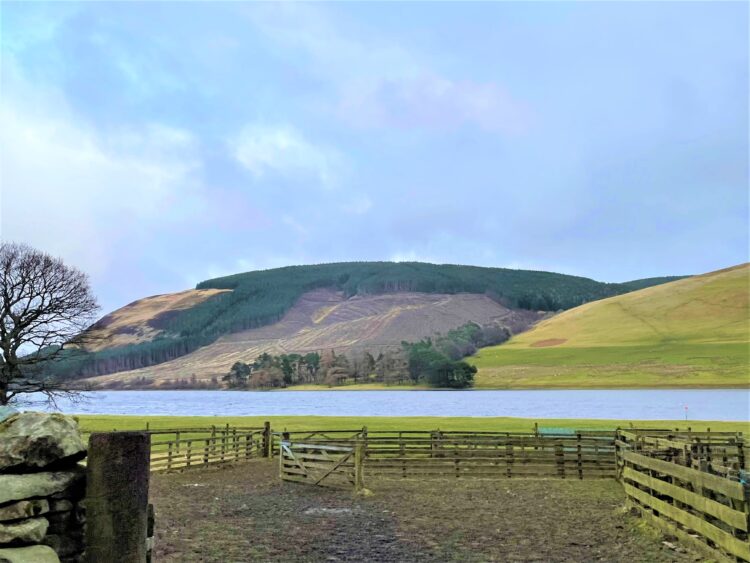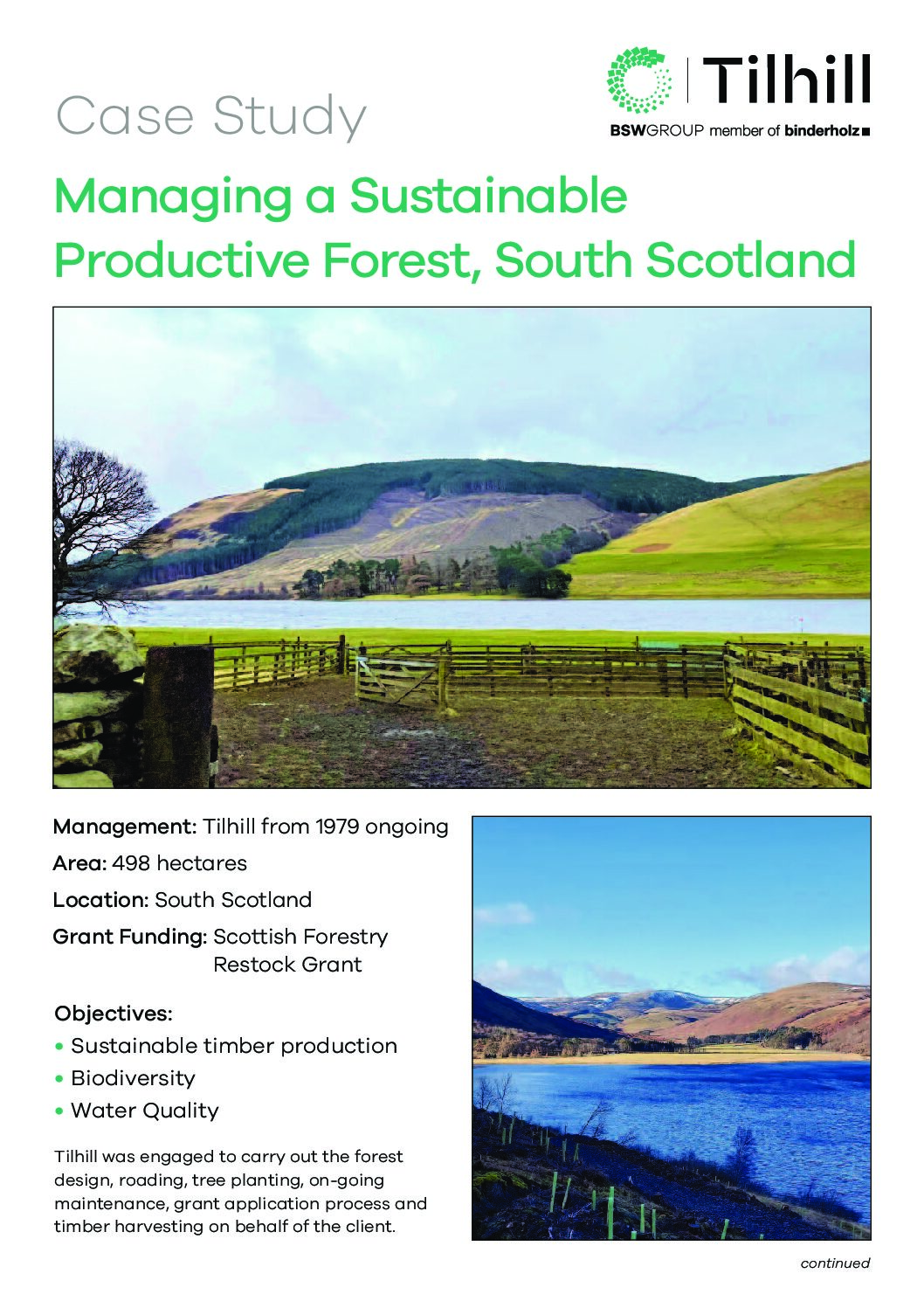This project helped to:

Produce sustainable timber

Improve biodiversity
Managing a Sustainable Productive Forest in South Scotland
Challenges
The main challenge was the effects of Phytophthora ramorum, a disease that larch is particularly susceptible to. The presence of this on the site adjusted the felling time for the larch, it also meant adjusting or adapting the tree species used for the subsequent replanting project.
The site was originally mixed species of a single age group, but now, the introduction of other diverse species has allowed a more natural feel and a mixed age class spread to increase the site diversity. The management plan also had to be adjusted following the effects of Storm Arwen and the harvesting of the resultant windblown trees.
Biodiversity
It is recognised that deadwood provides an important habitat and that its provision is important for maintaining biodiversity within the forest. Management allows for the retention of deadwood, in the form of both standing and fallen stems, where it does not pose a hazard.
Specifically relating to this site, the deadwood will be retained within areas of semi-natural woodland and small scale windthrow will not be cleared to enable development of
deadwood habitat.
Grassland and Heather
Grass and heather moorland areas are linked, maintained and expanded within the site through positive management and monitoring.
Areas along the verges of the forest road feature rare plant species including purging flax (Linum catharticum), quaking grass (Briza media), limestone bedstraw (Galium sterneri) and common rock-rose (Helianthemum nummularium) which were marked as site sensitivities during mapping and protected from damage during forest operations.
Regeneration and Tree Planting
The semi natural woodland areas, such as the broadleaf scrub woodland and riparian zones, were expanded as part of the forest plan through tree planting and natural regeneration.
Open Ground
Permanant open ground within a forest is recognised as being of particular environmental value and therefore areas of open space are being maintained to enhance value.
Wildlife at the Site
Ospreys, Goshawks, Buzzards, Sparrowhawk, Red Squirrels, Short-eared Owl and Pine Martens to name a few visitors to the forest have been recorded on site.
Tree and Shrub Species
As part of an early restructuring Tilhill replaced coniferous trees with broadleaf trees along the riparian zones to improve water quality and provide food for wildlife and nutrients to the river floor as the trees shed their leaves.
The site features native broadleaves such as native Oak, Birch, Willow, Aspen, Hawthorn, Rowan, Cherry and Blackthorn for biodiversity, to support a wide range of wildlife and to provide habitat and food sources.
The conifer species consist of Scots Pine, Norway Spruce, Douglas Fir, Sitka Spruce and represent the productive forest element of the plan to supply a future home-grown timber supply.
Landscaping
The area is a popular tourist route and the site is visible from the road. Therefore, a landscape and visual impact assessment was undertaken, one result of which was a redesign of an unnatural ‘tideline effect’ along the margins of the loch with some awkward relationships between the forest and open space.
The production of a design concept through landscape architecture to create a visual appeal helped shape the felling phases which broke the current structure of lower forest margin to improve diversity along the loch side. Later in the project, species were replanted with a design that interlocks and overlaps to emphasise shape and scale of landform whilst creating longer term diversity.
Overall, a more natural and informal species pattern developed to improve the structural diversity of the forest.
Archaeology
Bare areas were maintained around features of archaeological interest including the post medieval stock enclosures to protect and preserve them.
The medieval cultivation terraces were protected from damage through the planting of low-density broadleaf trees. The planting was carried out on the actual terrace itself to protect what remained of the banking and terrace structure.
People and Public Access
The site features community access under the Scottish Outdoor Access Code whereby everyone has access to the forest and can enjoy walks alongside the loch and offers a spectacular view of the steep hills. The site employs local contractors and so contributes to rural job creation in the area.
Timber Products
The site produces excellent home-grown timber such as sawlogs which are sent to the BSW Timber, Dalbeattie sawmill, located within 60 miles of the forest. There, the trees are cut into construction timber mainly for house building and other construction-related materials.
Bars are also cut and delivered to ‘Forest Gardens’ at Lockerbie in Dumfries & Galloway to be used for UK fencing materials.
The remaining part of the tree is used for fuelwood by E-ON energy power station at Lockerbie and is therefore chipped to generate electricity.
The site is UK Woodland Assurance Standard (UKWAS) certified and the timber products are classified as FSC™ certified and sourced from sustainably managed forests.
Climate Change
Tilhill started restructuring the site in 2005 in accordance with the UK Forestry Standard (UKFS). The site has had a series of felling and replanting rotations to produce timber for the local sawmills. The forest design allows for a broad mix of species for diversity and to minimise the risks of pests and diseases and mitigation against climate change.
Tilhill offers a complete woodland management service to forest or woodland owners, tailored according to their individual needs. If you have a similar project, our qualified and experienced forest managers can undertake every aspect of caring for your property. Get in touch today using the contact form below.
Back to all case studies
